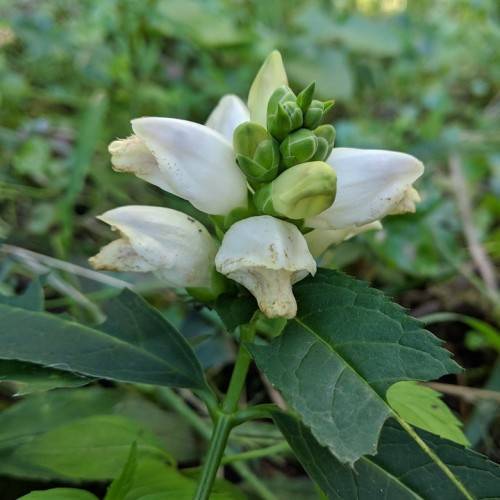
white turtlehead
Chelone glabra
Also Known As - White TurtleheadCycle:
Herbaceous Perennial
Watering:
Frequent
Hardiness Zone:
3 - 8
Flowers:
Flowers
Sun:
Part shade
Soil:
Sandy Loamy Clay Humus
Leaf:
Yes
Growth Rate:
Low
Maintenance:
Low
Drought Tolerant:
Yes
Salt Tolerant:
Yes
Care Level:
Medium
watering
White turtlehead (Chelone glabra) should be watered regularly to ensure its health and surviving during the growing season. The plant likes moist soil, and should be watered about once a week throughout the growing season. However, consideration should be taken regarding the environment, and the plant should not be overwatered. In dry climates and during dry spells, it is better to water a little bit more frequently as the soil dries out quickly. During the winter months, the plant does not need to be watered as often. In the absence of rainfall, white turtlehead should be watered once every 3 weeks or so during cooler months, and should not be watered if the soil is still moist from previous waterings.
sunlight
White turtlehead (Chelone glabra) needs 6 to 8 hours of direct sunlight daily to thrive and produce its beautiful white flower clusters. To help the plant get the most out of the sun, it’s best to place it in an area that is sunny in the morning and late afternoon, with partial shade during the hottest part of the day. This will help the plant stay hydrated without burning its leaves. Additionally, it is important the plant does not get too much shade or not enough sunlight, both of which can lead to stunted growth.
pruning
White Turtlehead (Chelone glabra) should be pruned in late winter, when the plant is still dormant. Pruning should be done conservatively, removing only dead, damaged, or unwanted growth. About 1-third of the stems can be removed, leaving the plant with a more pleasing shape and allowing light to reach the center. Trimming the stems and foliage back by 1-half to 2-thirds their original length during pruning will help promote bushy growth. It is also important not to prune too much, as this can reduce the number of flowers.
